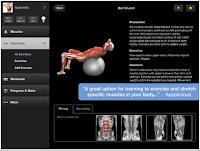

Atherton PJ, Greenhaff PL, Phillips SM, Bodine SC, Adams CM, Lang CH. Curr Opin Clin Nutr Metab Care 13: 34–39, 2010. Protecting muscle mass and function in older adults during bed rest. Deep muscle-proteomic analysis of freeze-dried human muscle biopsies reveals fiber type-specific adaptations to exercise training. Deshmukh AS, Steenberg DE, Hostrup M, Birk JB, Larsen JK, Santos A, Kjøbsted R, Hingst JR, Schéele CC, Murgia M, Kiens B, Richter EA, Mann M, Wojtaszewski JFP. Muscles, exercise and obesity: skeletal muscle as a secretory organ. Unravelling the mechanisms regulating muscle mitochondrial biogenesis. Hood DA, Tryon LD, Carter HN, Kim Y, Chen CC. Exercise-stimulated glucose uptake - regulation and implications for glycaemic control.

Sylow L, Kleinert M, Richter EA, Jensen TE.

Exercise as medicine - evidence for prescribing exercise as therapy in 26 different chronic diseases. Resistance exercise training as a primary countermeasure to age-related chronic disease. Exercise and acute cardiovascular events placing the risks into perspective: a scientific statement from the American Heart Association Council on Nutrition, Physical Activity, and Metabolism and the Council on Clinical Cardiology. Thompson PD, Franklin BA, Balady GJ, Blair SN, Corrado D, Estes NA 3rd, Fulton JE, Gordon NF, Haskell WL, Link MS, Maron BJ, Mittleman MA, Pelliccia A, Wenger NK, Willich SN, Costa F. Exercise-related acute cardiovascular events and potential deleterious adaptations following long-term exercise training: placing the risks into perspective-an update: a scientific statement from the American Heart Association. Franklin BA, Thompson PD, Al-Zaiti SS, Albert CM, Hivert MF, Levine BD, Lobelo F, Madan K, Sharrief AZ, Eijsvogels TMH. In this review, we focus on the role of exercise in altering the molecular landscape of skeletal muscle in a manner that improves or maintains its health and function in the presence of unloading or disease.Įpigenetics exercise muscle wasting resistance training skeletal muscle Accordingly, exercise has shown great promise and efficacy in preventing or slowing muscle wasting through changes in molecular physiology, organelle function, cell signaling pathways, and epigenetic regulation. The principal mechanisms controlling muscle mass have been well described and these cellular processes are intricately regulated by exercise. Decline in muscle mass contributes to multimorbidity, reduces function, and exerts a substantial, negative impact on the quality of life. However, unloading from extended bed rest and/or metabolic derangements in response to trauma, acute illness, or severe pathology, commonly results in rapid muscle wasting. The tissue has evolved to be largely load dependent and it readily adapts in a number of positive ways to repetitive overload, such as various forms of exercise training. The overall mass and energy requirements of skeletal muscle require it to be metabolically active and flexible to multiple energy substrates.

Skeletal muscle is the most abundant tissue in healthy individuals and it has important roles in health beyond voluntary movement.


 0 kommentar(er)
0 kommentar(er)
